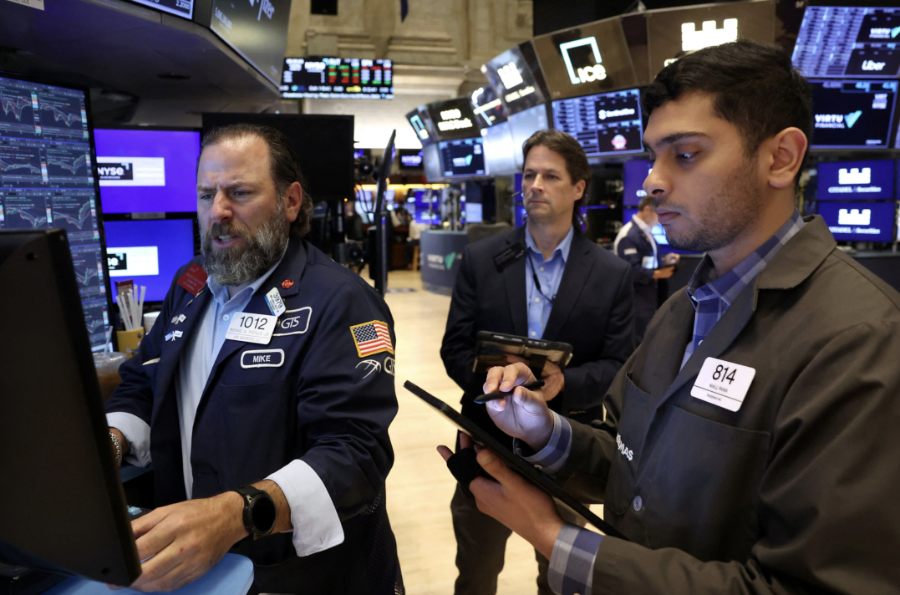However, the risk of a US government shutdown due to a non-renewal of the budget is looming over the minds of investors on Wall Street…

Illustration photo – Photo: Reuters.
US stocks rose on Monday (September 29) as AI stocks returned to active trading after a week of weakness. Crude oil prices fell sharply on concerns that global oil supplies will grow faster than demand.
At the close, the S&P 500 index increased 0.26% to 6,661.21 points. The Nasdaq index increased 0.48% to 22,591.15 points. The Dow Jones index increased 68.78 points, equivalent to an increase of 0.15% to 46,316.07 points.
Nvidia, the hottest AI stock on Wall Street, rose more than 2% Monday after being sold off along with other big AI stocks last week on investor skepticism, with some traders questioning whether Nvidia and OpenAI have enough power to support their AI infrastructure plans.
Many other chip stocks “followed” Nvidia, recording high gains in this session, such as Micron up more than 4% and AMD up more than 1%.
Another bright spot of the session was Electronic Arts, which rose 4.5% after the video game company announced it would delist from the stock exchange and go private in a $55 billion deal. According to a report by Goldman Sachs, the total value of mergers and acquisitions (M&A) in the US this year has surpassed $1 trillion, up 29% from the same period last year.
Barclays chief strategist Venu Krishna said the vibrant fundamental investment activity in the AI sector will continue to fuel the bull market trend in US stocks.
“The fundamental AI investment story shows no signs of slowing down, and other sectors are also benefiting from the wave of AI infrastructure spending. The concentration of this story in a few large companies may cause some caution, but with AI becoming the focus of global growth, the S&P 500 will have a big advantage over its rivals, given the large weighting of technology stocks in the index,” said Krishna.
However, the risk of a US government shutdown due to a non-renewed budget is looming over the minds of investors on Wall Street.
President Donald Trump met with top Republican and Democratic leaders in the US Congress on Monday to negotiate a temporary budget bill to keep the government running through the end of the current fiscal year without funding for the next. If no agreement is reached on this issue, the federal government will shut down on October 1, the first day of the new fiscal year.
The Labor Department said it would not release new figures, including the September non-farm payrolls report scheduled for Friday, if the government shuts down. Over the weekend, Mr. Trump told NBC News that federal workers would be laid off en masse if a government shutdown was not averted.
History shows that US government shutdowns have had little impact on the country’s financial markets. However, investor sentiment could be negatively affected if economic reports are delayed, making the outlook for US Federal Reserve interest rates more uncertain.
In the energy market, Brent crude oil futures in London fell $2.16/barrel, or 3.08%, to close at $67.97/barrel. WTI crude oil futures in New York fell $2.27/barrel, or 3.45%, to $63.45/barrel.
Oil prices fell after news that Iraq’s Kurdistan region resumed oil exports via pipelines through Türkiye over the weekend and OPEC+ plans to continue raising production in November. OPEC+ is an alliance between the Organization of the Petroleum Exporting Countries (OPEC) and some non-members including Russia.
According to forecasts, the restart of the above oil pipeline will provide the world with an additional 230,000 barrels of oil per day at a time when OPEC+ is continuously increasing production.
OPEC+ could decide to increase production by at least 137,000 barrels per day in November at the group’s meeting this weekend, sources familiar with the matter told Reuters. However, actual OPEC+ production is still 500,000 barrels per day below the alliance’s official quota.
Last week, Brent and WTI both rose more than 4%, marking their biggest weekly gains since June, as Ukraine’s attacks on Russian oil infrastructure raised concerns about disruptions to Russian oil supplies. Russia launched a major attack on Kiev and other parts of Ukraine over the weekend.















Leave a Reply